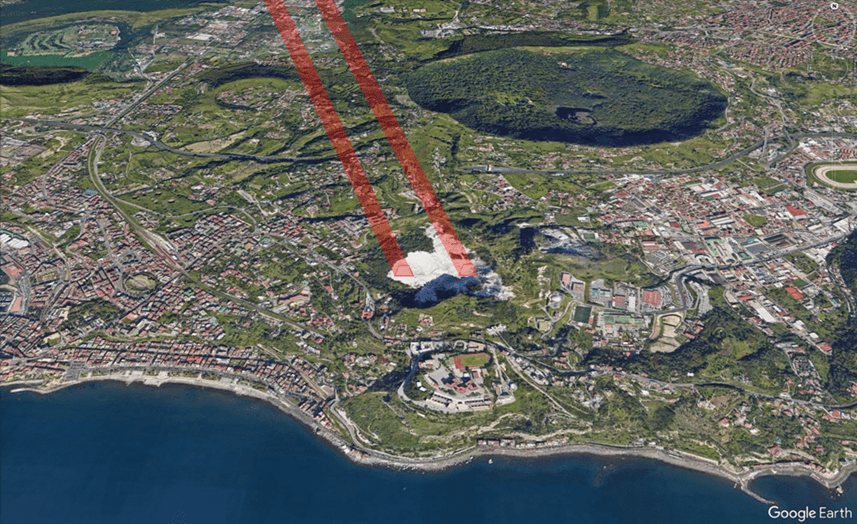The Flegrei Campi, a volcanic high -activity volcanic area, are the subject of a new thermal monitoring method developed by researchers from the National Institute of Geophysics and Volcanology (INGV). The study, published on
Remote Sensing Letters
proposes theUse of thermal data collected by the Ecostress tool of the International Space Station (ISS) to detect temperature variations that precede the most intense earthquakes in the area.
The method uses Ecostress data, a NASA-JPL sensor installed on the ISS, which provides surface temperature estimates with a spatial resolution of about 70 meters and a sampling frequency of about three days. The researchers analyzed two historic temperature series, relating to two areas of the sulfatara, in the period 2021-2024, comparing the thermal anomalies with the main registered seismic events.
The Ecostress tool hooked to the left of the International Space Station (NASA/JPL-CALTECH/KSC)
“We have detected anomal temperature variations in the emission area of the Solfatara which preceded some earthquakes of greater intensity, with an advance that has been going a few days to a few weeks“, explains Alessandro Piscini, Ingv researcher and first author of the article.
The analysis found an anomalous temperature variations, with increases up to 7 ° C, which preceded some earthquakes of greater intensitywith an advance of a few days or weeks. For example, an increase of 5 ° C anticipated the earthquake of magnitude 4.4 of 17 May 2024 by three days.
The use of two distinct statistical methods has made it possible to confirm the correlation between temperature variations and seismic activity. In addition, an increase in the average value of the temperature difference in recent years has been observed, in line with other signals of volcanic activity, such as bradisism and the emission of carbon dioxide.
“The temperature anomalies highlighted through two different statistical analyzes make us more confident about the possible link between the surface temperature fluctuation and the seismic activity of the area“, he says Cristiano Fidani, Ingv researcher and co-author of the research.
